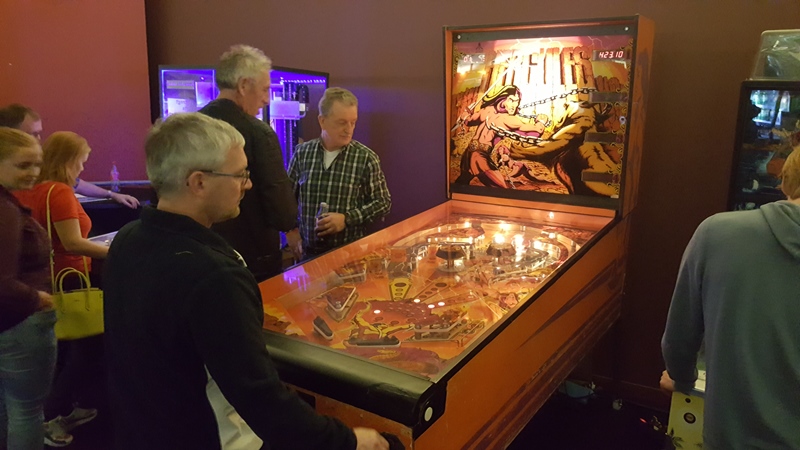Everything about pinballs
Pinballs are made of steel. Their diameter is 1 1/16 inch (2.7 cm), and they weigh approximately 80 grams. Nearly every pinball machine produced in the last 60 years is designed for this standard size.
Most bingo machines and some woodrails use a larger size ball: 1 1/8 inch.
Custom pinballs
There have been only a few exceptions: Bally's Truck Stop (1988) used pinballs with a 1-inch diameter. After the game was designed, it was discovered that balls occasionally got stuck on a ramp due to its narrow width. It was more cost-effective to ship the machine with smaller pinballs than to redesign the ramps.
Sega's Viper Night Driving (1998) featured Glo-Balls: pinballs coated in a yellow rubber layer. These weigh less, around 60 grams, creating a unique effect under blacklight. However, the rubber coating caused the balls to bounce more and behave unpredictably. Glo-Balls were unpopular among players and operators, not only because they felt different during gameplay but also because the rubber quickly became dirty and was easily damaged.
The most famous and widely accepted non-standard pinball is the Powerball used in the Twilight Zone pinball machine. This game includes five regular steel pinballs and one white ceramic Powerball. Although it shares the same size, the Powerball is lighter: only 65 grams. It plays much faster. It’s also unaffected by magnets beneath the playfield. The machine uses special sensor boards to detect whether a ball in a specific position is steel or ceramic. Stern’s Avatar LE edition also features a white Powerball.
Many pinball parts shops now offer custom pinballs. These include gold or silver-coated balls (note: the coating is often thin and wears off after a few games), black pinballs, and even ones with unique designs.

Pictured from left to right: a dirty Powerball, Glo-Ball, regular pinball, and black pinball.
Pinball types
There isn’t a dedicated factory that manufactures pinballs exclusively. Pinballs are essentially ball bearings made to specific steel types and finishing grades. Several varieties are available for purchase, with the primary difference being the type of steel used. Regular pinballs are made from carbon steel and can be polished to a mirror-like finish. Chrome steel pinballs are also available, they’re harder and retain their shine longer (and they reflectmore), but they become magnetized more quickly.
So in games without magnets you can use extra shiny chrome steel pinballs. In games with magnets, you need to use regular pinballs which you have to replace more often or tumble yourself.
You can order new balls at a pinball parts shop like pinballshop.nl (aff link).
Pinball maintenance
Regularly inspect your pinballs. They should be shiny and free of deep scratches, dirt, or haze. During gameplay, minor scratches and haziness will develop. Eventually, the rough surface can act like sandpaper on your playfield. Clean your pinballs often and restore their shine using a tumbler. If scratches become too deep, replacement is necessary. The frequency depends on how often you play and the type of game. Machines with fewer rubber rings and more metal ramps and guides tend to wear down pinballs faster.
Black custom pinballs are for sale at Back Alley Creations.
Some games are true exceptions and use unique balls. Atari’s Hercules uses an actual pool ball. Other games also feature special balls, though these are often locked in specific areas of the playfield and not used with the flippers. For example, Capcom’s Pinball Magic uses a lightweight staged plastic ball for its levitating pinball trick.

Atari's Hercules uses a real pool ball.
If you're looking for pinball parts, then check out Pinballshop.nl (affiliate link).
